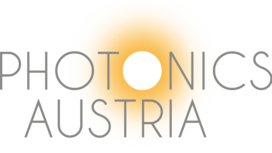Research
We investigate light on the subwavelength scale. We do so with tailored nanostructures, molecules and quantum dots. Our experimental methods include electron beam lithography, near-field microscopy, fluorescence and Raman spectroscopy, electron spectroscopy and time-resolved techniques.
Their strong local field enhancement and their light confinement to nanoscale volumes make plasmon modes in metal nanostructures an intriguing research topic even after decades of intense exploration. We have recently looked into specific plasmon modes coupling only weakly to light [1], stacked nanoparticles [2] and nanowires [3]. Besides geometry, material parameters as crystallinity and roughness crucially determine plasmonic properties [3,4]. Proceeding from single nanoparticles to regular arrays, emerging phenomena as surface lattice resonances still challenge our understanding of the underlying physics [5].
[1] M.K. Krug et al., Appl. Phys. Lett. 105, 171103 (2014)
[2] G. Schaffernak et al., ACS Photonics 5, 4823 (2018)
[3] P. Kusar et al., Nano Lett. 12, 661 (2012)
[4] A. Trügler et al., Phys. Rev. B 89, 165409 (2014)
[5] V. Tretnak et al., J. Phys. Chem. C (2019)
While surface plasmons were first experimentally evidenced by electron energy loss spectroscopy (EELS), it was only recently that EELS, together with cathodoluminescence made its comeback in plasmonics. In cooperation with the Graz University of Technology, we exploit the high spatial resolution of electron-microscopy-based EELS/CL, to analyze in detail the field profiles of surface and edge plasmons [1,2,3]. On the other hand, photoelectrons emitted from metal nanoparticles and accelerated in their plasmon fields prove valuable probes of plasmons, as we investigate together with the Wigner Institute, Budapest [4,5].
[1] F.-P. Schmidt et al., Nano Lett. 12, 5780 (2012)
[2] F.-P. Schmidt et al., Nature Communications 5, 3604 (2014)
[3] F.-P. Schmidt et al., ACS Photonics 5, 861 (2018)
[4] P. Dombi et al., Nano Lett. 13, 674 (2013)
[5] P. Racz et al., Nano Lett. 17, 1181 (2017)
We generate, image and apply optical near fields in tailored nanostructures. Besides scanning near field optical microscopy [1], we develop and use various plasmon field imaging schemes, as leakage microscopy [2] or plasmon-induced polymerization [3]. The near fields in more complex geometries as organic LED multilayer stacks can be designed to launch plasmons rather than to emit light [4]. Turning loss into an advantage, we used metal nanoparticles to locally heat thermoresponsive polymer brushes and to monitor their collapse via the resonance shift of the particle plasmon [5].
[1] M. Krug et al., Nanoscale 8, 16449 (2016)
[2] A. Hohenau et al., Opt. Express 19, 25749 (2011)
[3] C. Gruber et al., Appl. Phys. Lett. 106, 081101 (2015)
[4] D.M. Koller et al., Nature Photonics 2, 684 (2008)
[5] P. Winkler et al., Appl. Phys. Lett. 107, 141906 (2015)
We investigate molecules and semiconducting nanocrystals (quantum dots) as single emitters [1] or emitter ensembles. For the latter, we analyzed radiationless energy transfer, including the role of particle plasmons [2,3]. Of fundamental as well as applied interest, we used the combination of plasmonic nanostructures and molecular layers to map plasmon fields [4] and to control light extraction in organic LEDs [5]. Furthermore, we investigate photoconductance in closely packed quantum dot films.
[1] M. Belitsch et al., Nano 13, 1850039 (2018)
[2] N. Reitinger et al., Phys. Stat. Sol. 208, 710 (2011)
[3] F. Reil et al., Nano Lett. 8, 4128 (2008)
[4] D.M. Koller et al., Phys. Rev. Lett. 104, 143901 (2010)
[5] M. Auer-Berger et al., Appl. Phys. Lett. 111, 173301 (2017)
